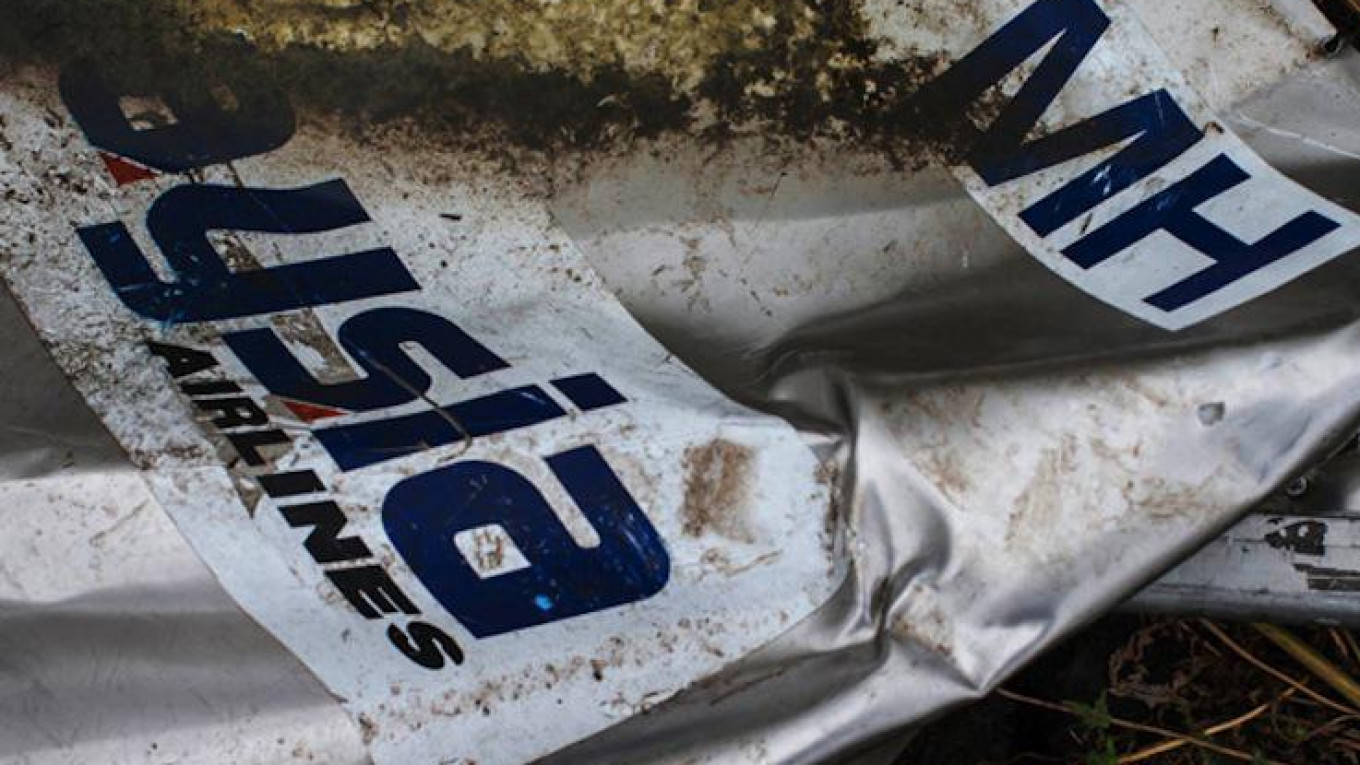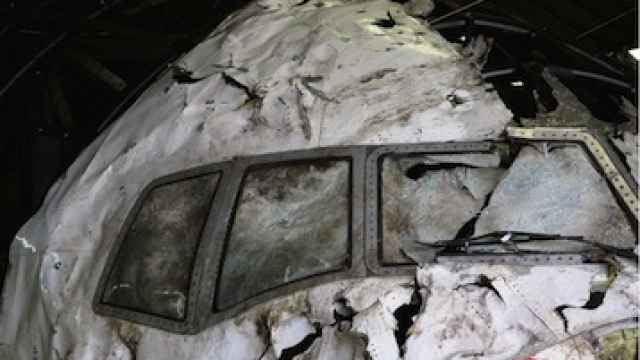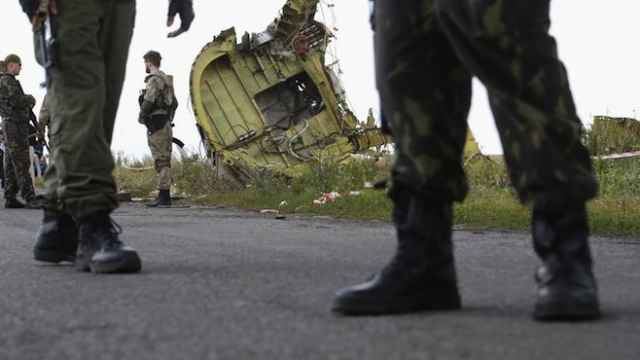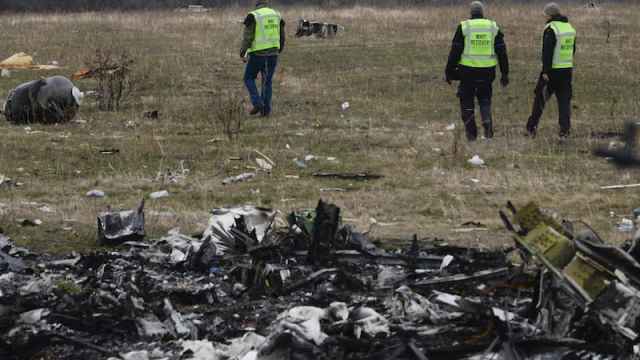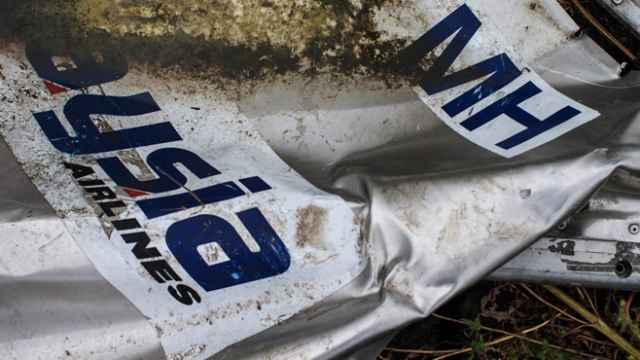It has been almost a year since the Dutch Safety Board (DSB) concluded a Russian-made Buk surface-to-air missile was responsible for the downing of Malaysia Airlines Flight MH17 over eastern Ukraine on July 17, 2014.
From day one, the Russian side has worked to undermine the Dutch findings. Taking the information war to qualitatively new levels, government officials and affiliated state media have offered conspiracy theories ranging from the vaguely plausible to the plain absurd. MH17 was shot down by a Ukrainian SU25 fighter plane, said one; the Buk missiles were Ukrainian, said others. One theory memorably blamed the CIA, saying the passenger jet had left Amsterdam with 298 corpses on board.
A new report by the Dutch-led Joint Investigation Team (JIT) has, however, definitively sided with the initial conclusion of the Dutch Safety Board. The investigation, which has been collecting evidence for a possible criminal trial, concluded the missile system originated in Russia. And was later returned there too.
The JIT investigation also pinpoints with greater clarity who fired the missile, and from where it was fired. In line with earlier reports, the launch location was identified in a field south of the east Ukrainian village of Snizhne, which was under control of Russian-backed separatist forces at the time. The investigation claims to have listed approximately 100 individuals implicated in transporting and launching the missile.
While the JIT report comes at the end of an extensive investigation into MH17, its conclusions hardly come as a surprise to Kirill Mikhailov and Ruslan Leviev, co-founders of a Russian investigative group known as the Conflict Intelligence Team (CIT).
Together with colleagues in the Bellingcat investigation group, Mikhailov and Leviev were pioneers of open-source research techniques. They pieced together apparently unconnected data — pictures, public information and web resources — into compelling documented histories.
Their open-source research provided crucial evidence, for example, that located a Russian Buk launcher in the region where MH17 was shot down. Their methods relied on photos of the suspected launch site and images of Russian Buk units sighted in the area by social media users, to eventually determine which specific Russian Buk was the likely culprit. The results of the investigations played a key role in the Dutch investigations into MH17.
In another investigation in May 2015, CIT used photos found on Russian social networks to demonstrate that Russian special forces troops were, in fact, fighting (and dying) in Ukraine. This was happening even after the imposition of the February 2015 Minsk cease-fire agreement, aimed at ending the conflict.
Over the course of the investigation, the pair learned open-source techniques like geolocation. Mikhailov, a linguist by trade, also became proficient at manipulating syntax in search queries to mine Russian-language social media for leads in ways Bellingcat couldn’t match. This skill was particularly handy in tracking Russian soldiers as they flooded into eastern Ukraine.
In 2015, Mikhailov and Leviev expanded their skills with a new
project, eventually focusing on Russia’s role in the Syrian
conflict. The Kremlin’s official narrative remains that Russia is
waging a purely aerial campaign in support of Syrian President Bashar
Assad. As CIT’s open-source investigation established, however,
Russian soldiers are also fighting on the front lines.
It is thankless work, and Russian public opinion continues to measure highly in support for Putin and his policies.
It is also dangerous work, forcing the majority of the group to work in complete anonymity. Mikhailov says CIT has up to five full-time members, with expertise in important fields such as weapon identification. The exact identities of these members are not known even to Mikhailov and Leviev. It is a security measure that allows them to capitalize on expertise within Russia, where the threat of arrest and prosecution for this kind of activity has been growing steadily.
CIT’s work has also put them in direct conflict with the Kremlin, which has staked significant domestic legitimacy on the narratives it has formed around these conflicts. The group has reported deaths of Russian soldiers before the government has gotten around to admitting them.
“You never know actually if any of this is having an impact,” says Mikhailov. “But the fact that we announce more Russian soldiers’ deaths than the Defense Ministry is not okay. We think we should hold them accountable about who gets killed in operations and why.” Mikhailov says the group does not intend to concentrate on Russia alone, however, and the plan is to expand their activities worldwide.
“We can switch to any other place, any other country, any other military conflict” he says. “We’ve acquired quite a skill, and it would be a shame to let it go to waste.”
A Message from The Moscow Times:
Dear readers,
We are facing unprecedented challenges. Russia's Prosecutor General's Office has designated The Moscow Times as an "undesirable" organization, criminalizing our work and putting our staff at risk of prosecution. This follows our earlier unjust labeling as a "foreign agent."
These actions are direct attempts to silence independent journalism in Russia. The authorities claim our work "discredits the decisions of the Russian leadership." We see things differently: we strive to provide accurate, unbiased reporting on Russia.
We, the journalists of The Moscow Times, refuse to be silenced. But to continue our work, we need your help.
Your support, no matter how small, makes a world of difference. If you can, please support us monthly starting from just $2. It's quick to set up, and every contribution makes a significant impact.
By supporting The Moscow Times, you're defending open, independent journalism in the face of repression. Thank you for standing with us.
Remind me later.


